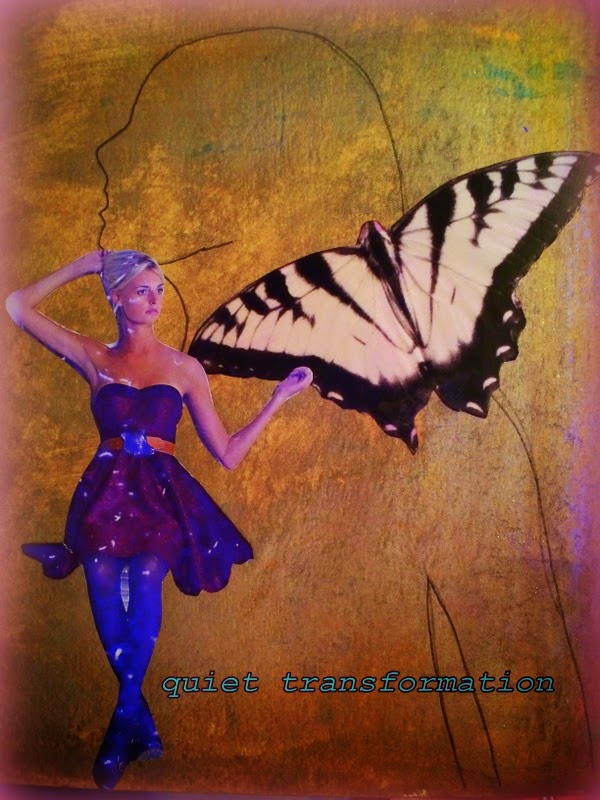Welcome to July! It's hard to believe that we are already at the midpoint of the year. My family and I are enjoying a month long hiatus in a little town in Upstate New York in a cottage on Lake Ontario. It is a welcome reprieve from the Florida heat and I am grateful for the retreat from our regular routine to restore and recharge. This time is truly about letting go of the work which I have been so intensely involved over the last year in order to allow the space for only relaxation and play!
This month on the blog I am overjoyed to illuminate a beloved friend and artist, Brandon Thompson. I consider Brandon to be a true warrior of the heart. By that, I am referring to the definition of warriorship that Chogyam Trungpa elucidates in the tradition of Shambhala Buddhism: "Warriorship here does not refer to making war on others. Aggression is the source of our problems, not the solution. Here the word “warrior” is taken from the Tibetan 'pawo', which literally means “one who is brave.” In addition to his courage, I admire the ease with which Brandon is able to adapt and find home in any environment, whether drinking beer and playing cards or delivering a dharma talk before meditation. His support and guidance during my graduate program was like a true beacon of light from beginning to end. I'm honored to have him featured as this month's guest artist.
More specifically, for the past few years and into the foreseeable future, I’ve really found myself on the path of the ecstatic poet. What is ecstatic poetry? I have my ideas about that, and we can talk about them later on if it feels right. The pith of it feels to me like poetry-as-practice, poetry as a means of really connecting us to our essence. Have you ever read a poem and it feels, in your body and in your heart, like you’ve heard exactly what you needed to hear in that moment? That feeling of “mmmmmmm” that makes the hair on the back of your neck stand up? A message that informs you in some way about your Path, about your heart? That’s an ecstatic experience, and you’ve just read an ecstatic poem. In my writing, I hope to capture this transformative spirit of embracing the path and dancing with mystery.
Have you always been creative or is it something you have grown into?
Do you have any daily practices or self care rituals that you rely on to support your craft?
How, if at all, has your art making cultivated the conditions for healing in your life? Can you give an example?
for those on the path of illumination
for those on the path of love
and for those hoping to one day walk both
with ease and gentleness
this is for you
Who or what currently inspires you?
What questions are alive for you now? Toward what experience or idea do you feel called to explore next in your creative journey?
Finally, what wisdom or particular suggestion would you offer to someone who is seeking to be more creative in their own lives?
Thank you Brandon!
Brandon Thompson is a poet, a scholar, a musician and a lover of music, and a Buddhist practitioner and teacher. He is an Associate Core Faculty Member in Sofia University’s Hybrid: Face-to-Face/Online Master's program, and spends his days joyfully guiding and humbly mentoring students from all over the world. Brandon has been a student of Mahayana Buddhism since 1999, and has taught in this tradition since taking his bodhisattva vow in the summer of 2007. He finds his home practices in lojong (mind training) and tonglen (sending and taking) meditation, first prescribed by the Buddhist sage Shantideva in the 8th century. In addition to this, Brandon has published a book of ecstatic poetry entitled “The Long Road Home: A Collection of Poems from an Open Heart,” currently in its Second Edition. His second collection of poetry, "From the Back of a Thirsty Camel," will be released summer 2015. He regularly facilitates ecstatic poetry workshops across the United States.
Brandon's current work involves bringing ecstatic poetry more fully into his life and into the world. Through his publications, scholarly writing, teaching, and workshops, Brandon is seeking to share the transformative power of ecstatic poetry with others and to further define and engage the power of this ancient contemplative art form. His first book of poetry The Long Road Home can be found on Amazon.
You can stay connected to Brandon through his Facebook page: Brandon Thompson, Ecstatic Poet and website http://www.brandonthompsonauthor.com/about-brandon/













